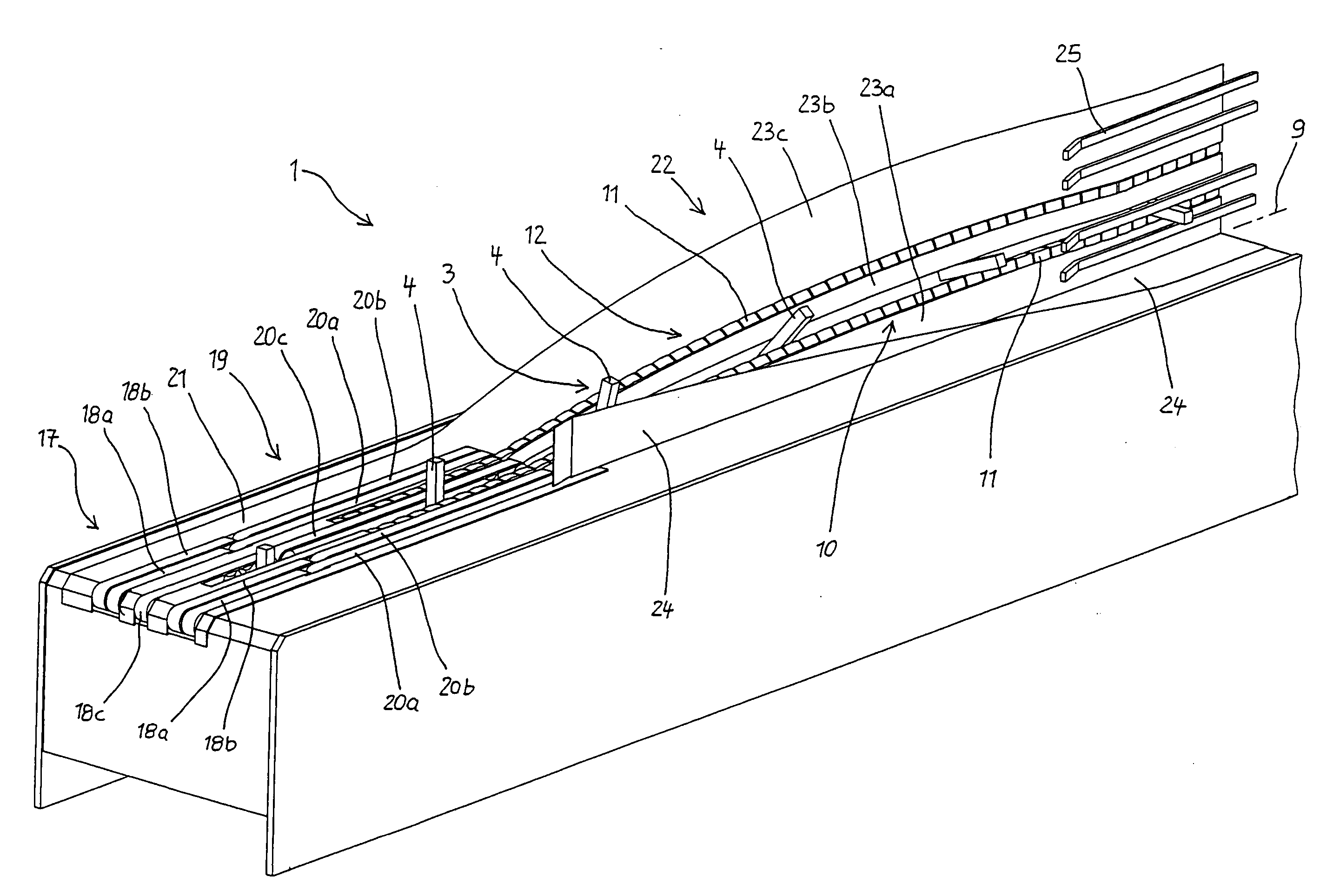Device for transferring continuously transported printing products from a flat lying position into an upright position or vice versa
a technology of transport device and printing product, which is applied in the direction of conveyor, printing, book binding, etc., can solve the problems of only being suitable for the uprighting of products, printing products, particularly less flexible printing products, and may still shift the bottom sheet lying on the channel side plate, etc., to achieve high transfer rate, simple construction, and careful transport of printing products
- Summary
- Abstract
- Description
- Claims
- Application Information
AI Technical Summary
Benefits of technology
Problems solved by technology
Method used
Image
Examples
Embodiment Construction
[0013] The uprighting device 1 shown in FIGS. 1 and 2 is designed for uprighting, for example, sheet stacks 2a . . . g that are composed of loose sheets and fed to the uprighting device 1 while flatly lying on a transport belt 16 of a feed conveyor 15 such that they are about equidistantly spaced apart from one another. For convenient reference, the sheet stack on belt 16 can be considered as having a head 2′ and an opposite foot at the shorter edges, a front 2″ and opposite back at the longer edges, and top 2′″ and opposed bottom primary surfaces or faces bordered by the four edges. The sheet stacks are received with a synchronous transport speed v1 by a synchronous belt conveyor 17 that is composed of several adjacently arranged transport belts 18a, b, c as shown in FIG. 2 with reference to the sheet stack 2a. The individual transport belts 18a, b, c have different lengths and are followed by transport belts 20a, b, c of a downstream braking belt conveyor 19 that additionally tran...
PUM
 Login to View More
Login to View More Abstract
Description
Claims
Application Information
 Login to View More
Login to View More - R&D
- Intellectual Property
- Life Sciences
- Materials
- Tech Scout
- Unparalleled Data Quality
- Higher Quality Content
- 60% Fewer Hallucinations
Browse by: Latest US Patents, China's latest patents, Technical Efficacy Thesaurus, Application Domain, Technology Topic, Popular Technical Reports.
© 2025 PatSnap. All rights reserved.Legal|Privacy policy|Modern Slavery Act Transparency Statement|Sitemap|About US| Contact US: help@patsnap.com



